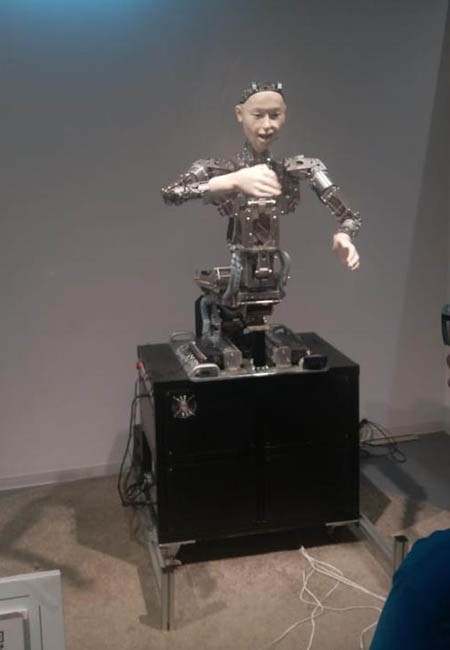
From seafood to fish markets, peaceful gardens, museums and skyscrapers, that’s Tokyo for you

If you happen to find yourself in Tokyo, a visit to Ikebukuro Life Safety Learning Centre (ILSLC) should be at the top of your list of places to visit. In fact, this should be where the tour begins, so that you start with an experience you remember for the rest of your life.
It is a free two-hour tour one must not miss. It isn’t just some random orientation about earthquakes. The tour includes a fully equipped fire drill and exercises with live fire extinguishers. The most frightening part is a smoke-filled dark alley, which one is required to exit without screaming. One thing I really loved about the ILSLC was the virtual earthquake experience available to all participants willing to go through it.
The Japanese parliament (Diet) and the huge library associated with it, were the next two places on my list. From there we went to the University of Tokyo where apart from visiting several other departments, I visited the department of agriculture to take a look at the statue of Hachiko, the dog. The story goes that Hachiko used to see off his master - a professor at the agriculture department of the University of Tokyo - at the railway station every day from where the professor took a train to work. In the evening the dog would come back to receive the master. One day the professor didn’t return as he had died of a sudden heart attack. Hachiko kept waiting there for ten years and eventually died at the station. In his memory, two statues were placed in Tokyo, one at the station where the dog waited, and the other in front of the department where the professor taught.
As a history buff, I was particularly interested in the Edo-Tokyo Museum near the Sumida River which runs through Tokyo. Edo was the name of Tokyo city till 1889 when it was renamed Tokyo (which means the eastern capital). The museum covers the 400-year history of Tokyo. It contains beautifully carved and intricately crafted models of life in Edo. A replica of the entire city is placed at the centre of the museum complete with models of buildings, bridges, markets, ships and homes. Walking through the halls is the closest thing to experiencing the life of the Edo period. The most impressive exhibits are about how Japan transformed itself after the Meiji Reformation (or Revolution, as some people call it).
If you are in Tokyo, it is impossible to miss two towers i.e. Tokyo Tower and the Tokyo Sky Tree. The former is older - built in 1958 - and shorter at 1,090 feet. The latter i.e. Tokyo Sky Tree, is the tallest structure in Japan at 2,080 feet. This is almost twice as high as Tokyo Tower and was completed in 2012.
If you want to see a replica of the Eiffel Tower, go to Tokyo Tower. But if you want to feel the height of a skyscraper, climbing the Tokyo Sky Tree -- the tallest self-supporting tower in the world -- is a better bet. The lift takes you to the top within a minute. From there, you can take a look at the highest mountain in Japan, apart from the spectacular views of the Tokyo skyline. It is amazing how a country that was devastated in the World War II rebuilt itself with such resilience and speed.
Lovers of seafood would do themselves a huge favour by paying a visit to Tokyo’s fish market. But one needs to get up at five in the morning to witness the tuna auction, which is a must watch. When we reached there at around 7 am, the activity was coming to a close. There is an older fish market which is being demolished right now for the upcoming Tokyo Olympics due to be held in 2020. The new fish market that is taking its place is mesmerizing, to say the least. Towards the outer side of the fish market one can indulge in the best sushi breakfast there is. When the inner fish market auctions are done, action shifts to the outer market with hundreds of seafood cafes, shops, and restaurants where cooked and raw crabs, fishes, lobsters, and sundry varieties of aquatic species are sold and devoured.
I have seen fish markets at many cities; they are mostly dirty and nauseating. Not in Tokyo. Here you can experience one of the cleanest fish markets of the world. As for noise, it is as loud as anywhere else. I can suggest some more interesting places in Tokyo such as the Tokyo Aquarium, the Museum of Digital Art and the Museum of Science and Technology. Finally, if you are interested in cinema, don’t miss the Kurosawa Restaurant.
There are now at least four Kurosawa restaurants but the original one, established in 1999 -- just a year after Kurosawa’s death -- is perhaps the best. For the uninitiated, let me explain that Akira Kurosawa (1910 - 1998) was arguably the greatest film director of Japan whose films such as Seven Samurai (1954) and The Hidden Fortress (1958) became classics of the world cinema. As I entered the Kurosawa Restaurant, I noticed that the entrance with its slatted windows and the traditional wooden gate is modelled after a set in Red Beard, a film he made in 1965. In the lobby, I noticed a photograph of the master sitting prominently in an illuminated alcove with a nearby original film poster of Yujimbo (1961). The food was good and the ambience took me to the film world of Kurosawa. What else can a movie lover want at a reasonable price?
From Tokyo, I took a bullet train to Kyoto and Osaka, and then to Hiroshima and Nagasaki, but those travels need another article. For now Sayonara, which mean goodbye in Japanese.